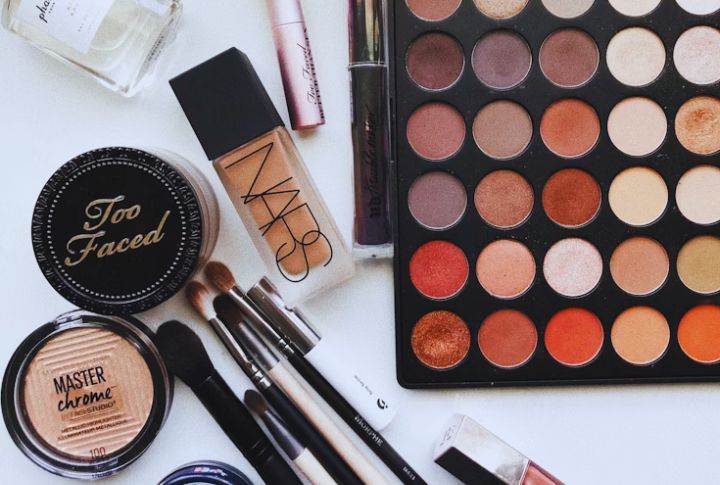
In a world obsessed with flawless finishes and bold branding, some beauty names just don’t measure up. While the packaging might impress and the marketing dazzles, there’s often more behind the mirror. Before restocking your glam bag, see these 10 familiar labels that quietly fall short of the hype, according to buyers, and a few unexpected red flags.
Too Faced

Too Faced built its brand on bold aesthetics, but performance often falls short. Foundations have faced criticism for poor color matching and fading pigment. Users with sensitive skin report irritation from strong scents. Despite ethical beauty claims, the brand’s transparency on testing remains murky. Parabens in select products also remain a dealbreaker for many.
NARS

NARS has faced backlash for animal testing in regions with strict regulations, and some countries have banned it. Its products, particularly base makeup, are linked to breakouts, and heavy ingredients have sparked concern. Shoppers call out the price-to-quality mismatch. Even bestsellers like lipsticks don’t always perform as promised.
MAC Cosmetics

Despite its iconic status, MAC has struggled with consistency across product lines. Users frequently mention foundations that oxidize and look uneven hours later. Sensitive skin types may react to the preservatives and fragrances commonly found in its lineup. Though MAC claims to value inclusivity, some ranges still lack deeper tones.
Revlon

Allergy-prone users avoid Revlon for ingredients like parabens and synthetic fragrances. The brand’s long-wear claims often don’t hold up under real-world use. Complaints about poor shade variety and oxidizing foundations are common. Revlon has also faced pushback for testing in markets requiring animal trials. Batch inconsistencies further add to customer frustration.
CoverGirl

CoverGirl’s “clean” image doesn’t always hold up under scrutiny. Recalls over contamination and faulty packaging have damaged trust. Some products even contain phthalates, an ingredient under growing consumer concern. Buyers have noticed fluctuating quality from one batch to the next. There are also lingering doubts about the testing procedures.
Maybelline

Maybelline has built its legacy on mascara, yet smudging remains a common complaint, especially in humid conditions. The advertised volume and length fall short in real use. Combined with shelf-life issues in other products, users find that the brand’s bold marketing rarely matches their actual day-to-day performance.
Urban Decay

This brand’s reputation for tenacity masks growing concerns over quality. Eyeshadows that once delivered punchy color now fade quickly, even with primer. Reformulations of fan-favorite items have disappointed long-time users. In fact, growing reports of skin irritation have chipped away at the brand’s once-loyal fan base.
LOreal Paris

Despite the luxury feel, its product packaging draws criticism. Excessive plastic use clashes with modern sustainability goals. Inside the bottle, issues like skin irritation from drying alcohols persist. Deeper skin tones also remain underserved in several face product lines, which has widened the inclusivity gap.
Almay

Almay’s hypoallergenic label hasn’t shielded it from reports of skin reactions. Many feel the brand hasn’t kept pace with modern beauty trends. The continued use of talc raises concern among ingredient-conscious consumers. Performance varies noticeably between batches. Even foundations tend to cake and leave a noticeably unnatural finish.
Sally Hansen

Formaldehyde in nail polish is a major red flag for Sally Hansen critics. Chips and cracks often show up just hours after application. Plus, harsh chemicals in foot care lines have led to skin irritation reports. Users say the wear time doesn’t match brand promises, while quick-dry claims are frequently overstated.

Comments
Loading…